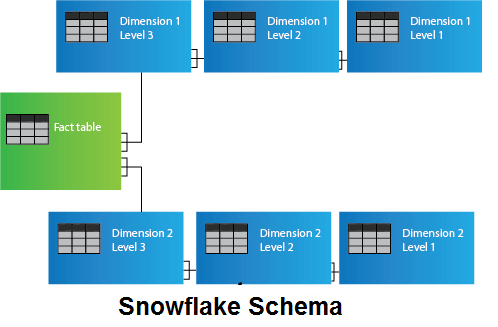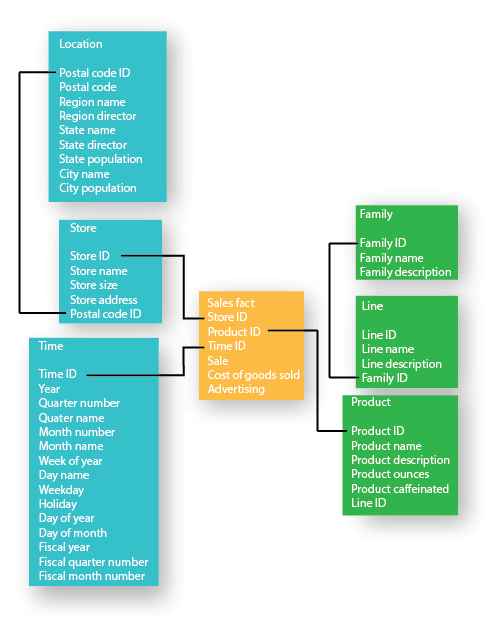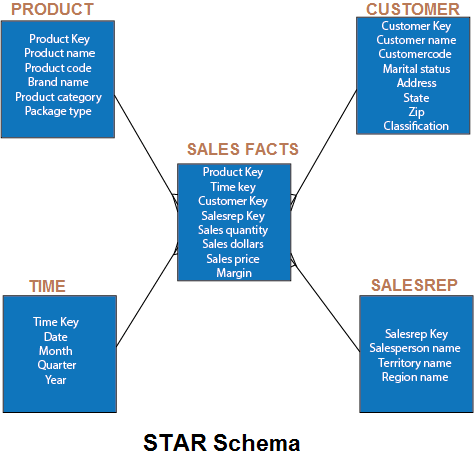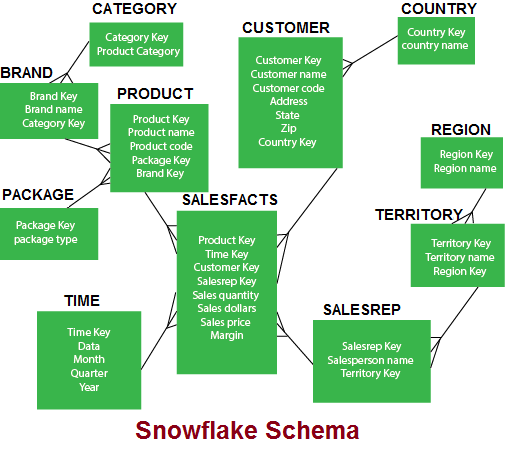What is Snowflake Schema?A snowflake schema is equivalent to the star schema. "A schema is known as a snowflake if one or more dimension tables do not connect directly to the fact table but must join through other dimension tables." The snowflake schema is an expansion of the star schema where each point of the star explodes into more points. It is called snowflake schema because the diagram of snowflake schema resembles a snowflake. Snowflaking is a method of normalizing the dimension tables in a STAR schemas. When we normalize all the dimension tables entirely, the resultant structure resembles a snowflake with the fact table in the middle. Snowflaking is used to develop the performance of specific queries. The schema is diagramed with each fact surrounded by its associated dimensions, and those dimensions are related to other dimensions, branching out into a snowflake pattern. The snowflake schema consists of one fact table which is linked to many dimension tables, which can be linked to other dimension tables through a many-to-one relationship. Tables in a snowflake schema are generally normalized to the third normal form. Each dimension table performs exactly one level in a hierarchy. The following diagram shows a snowflake schema with two dimensions, each having three levels. A snowflake schemas can have any number of dimension, and each dimension can have any number of levels. 
Example: Figure shows a snowflake schema with a Sales fact table, with Store, Location, Time, Product, Line, and Family dimension tables. The Market dimension has two dimension tables with Store as the primary dimension table, and Location as the outrigger dimension table. The product dimension has three dimension tables with Product as the primary dimension table, and the Line and Family table are the outrigger dimension tables. 
A star schema store all attributes for a dimension into one denormalized table. This needed more disk space than a more normalized snowflake schema. Snowflaking normalizes the dimension by moving attributes with low cardinality into separate dimension tables that relate to the core dimension table by using foreign keys. Snowflaking for the sole purpose of minimizing disk space is not recommended, because it can adversely impact query performance. In snowflake, schema tables are normalized to delete redundancy. In snowflake dimension tables are damaged into multiple dimension tables. Figure shows a simple STAR schema for sales in a manufacturing company. The sales fact table include quantity, price, and other relevant metrics. SALESREP, CUSTOMER, PRODUCT, and TIME are the dimension tables. 
The STAR schema for sales, as shown above, contains only five tables, whereas the normalized version now extends to eleven tables. We will notice that in the snowflake schema, the attributes with low cardinality in each original dimension tables are removed to form separate tables. These new tables are connected back to the original dimension table through artificial keys. 
A snowflake schema is designed for flexible querying across more complex dimensions and relationship. It is suitable for many to many and one to many relationships between dimension levels. Advantage of Snowflake Schema
Disadvantage of Snowflake Schema
Next TopicStar Schema vs Snowflake Schema
|
 For Videos Join Our Youtube Channel: Join Now
For Videos Join Our Youtube Channel: Join Now
Feedback
- Send your Feedback to [email protected]
Help Others, Please Share










